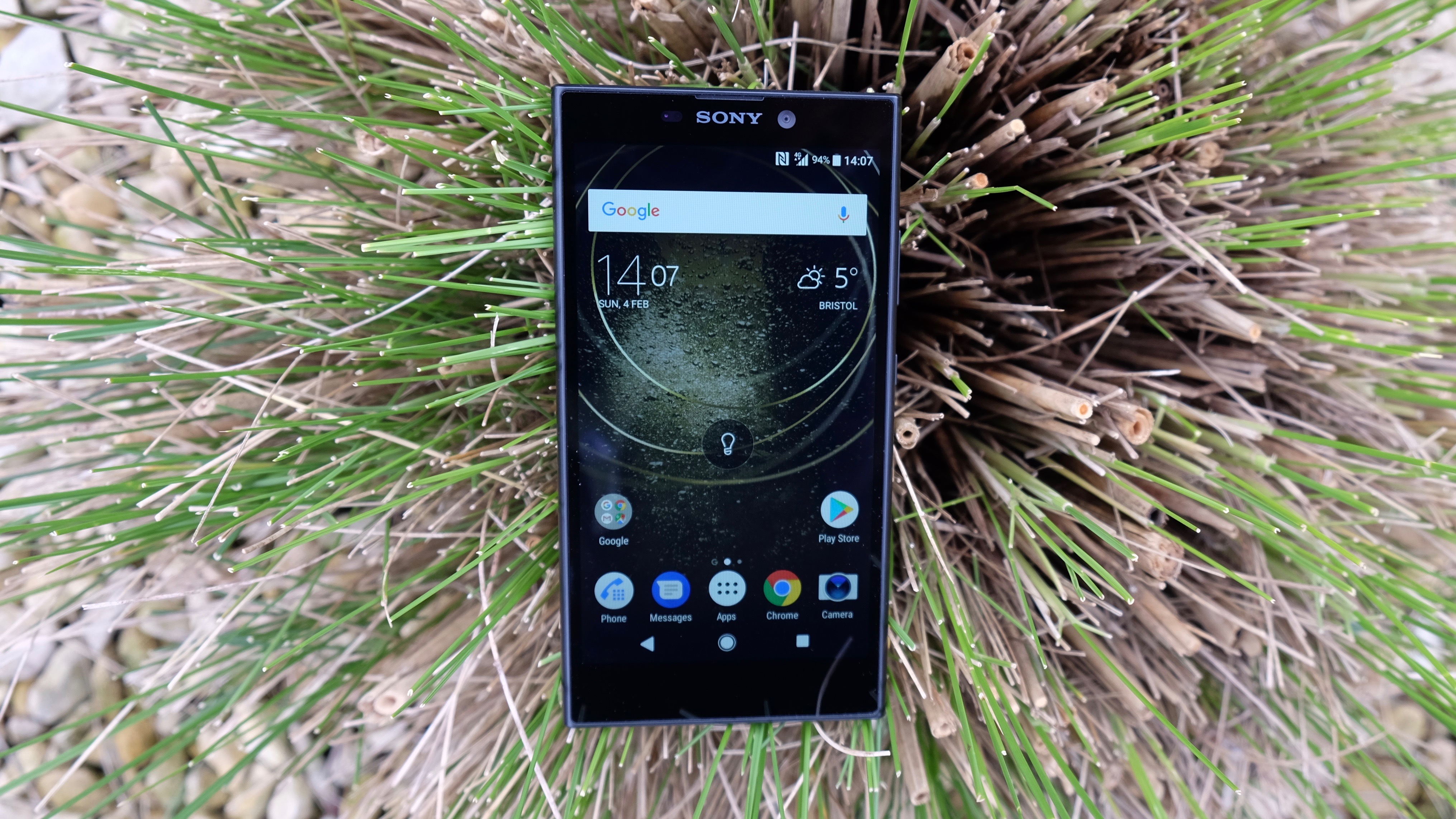Why you can trust TechRadar
Interface and reliability
- Android 7.1
- Sony apps duplicate Google’s
The Sony Xperia L2 runs on an older version of Google's ubiquitous mobile OS, Android 7.1. Given that Android 8.0 Oreo hit general availability back in August 2017, that’s a bit of a disappointment - especially when you consider that the Sony Xperia L1 also shipped with Android 7.
That said, it's far from an outdated operating system, and Sony's custom UI is generally light and pleasant to use. It wisely refrains from messing with the drop-down notification and shortcut menu, which is one of Android's most enduringly great features.
Sony also sticks with the traditional app tray button at the bottom of the home screen, although once you enter this section things are a little different. Scrolling laterally through apps feels a little odd, though we suppose it's consistent with the home screen action.
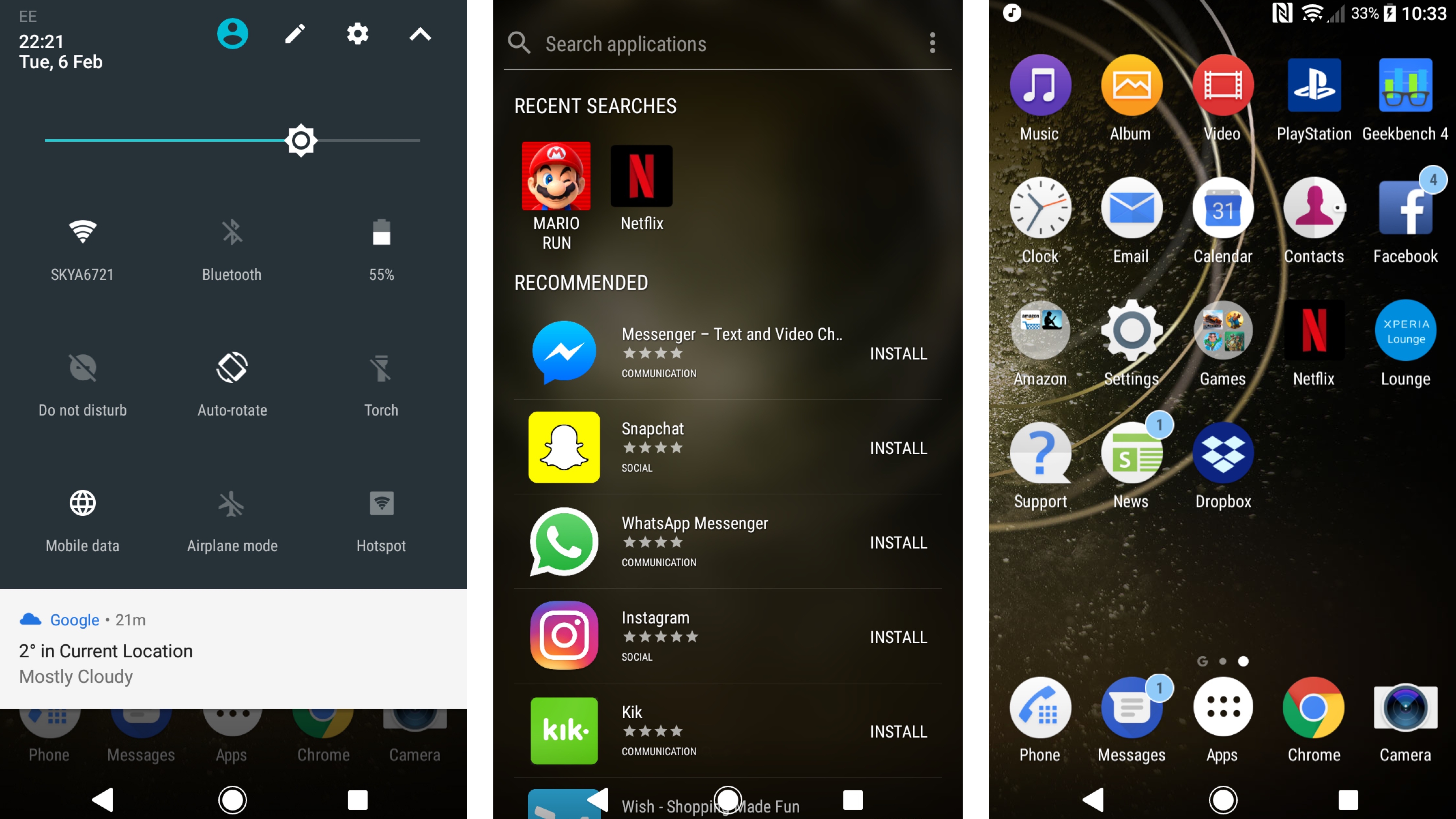
Swiping left from this app tray brings up Sony's app search function, which can also be accessed by swiping down on the middle of the home screen. This is an effective way of locating apps with a smart search function, though using the bulk of this screen to list recommended apps seems like a waste of space.
Sony makes a big play of the ability to operate the L2 with one hand, with a function that markedly shrinks the view towards either bottom corner. This inclusion is fine, but we found that the method of accessing it - by swiping up from either of those corners - clashed with the camera shortcut on the lock screen.
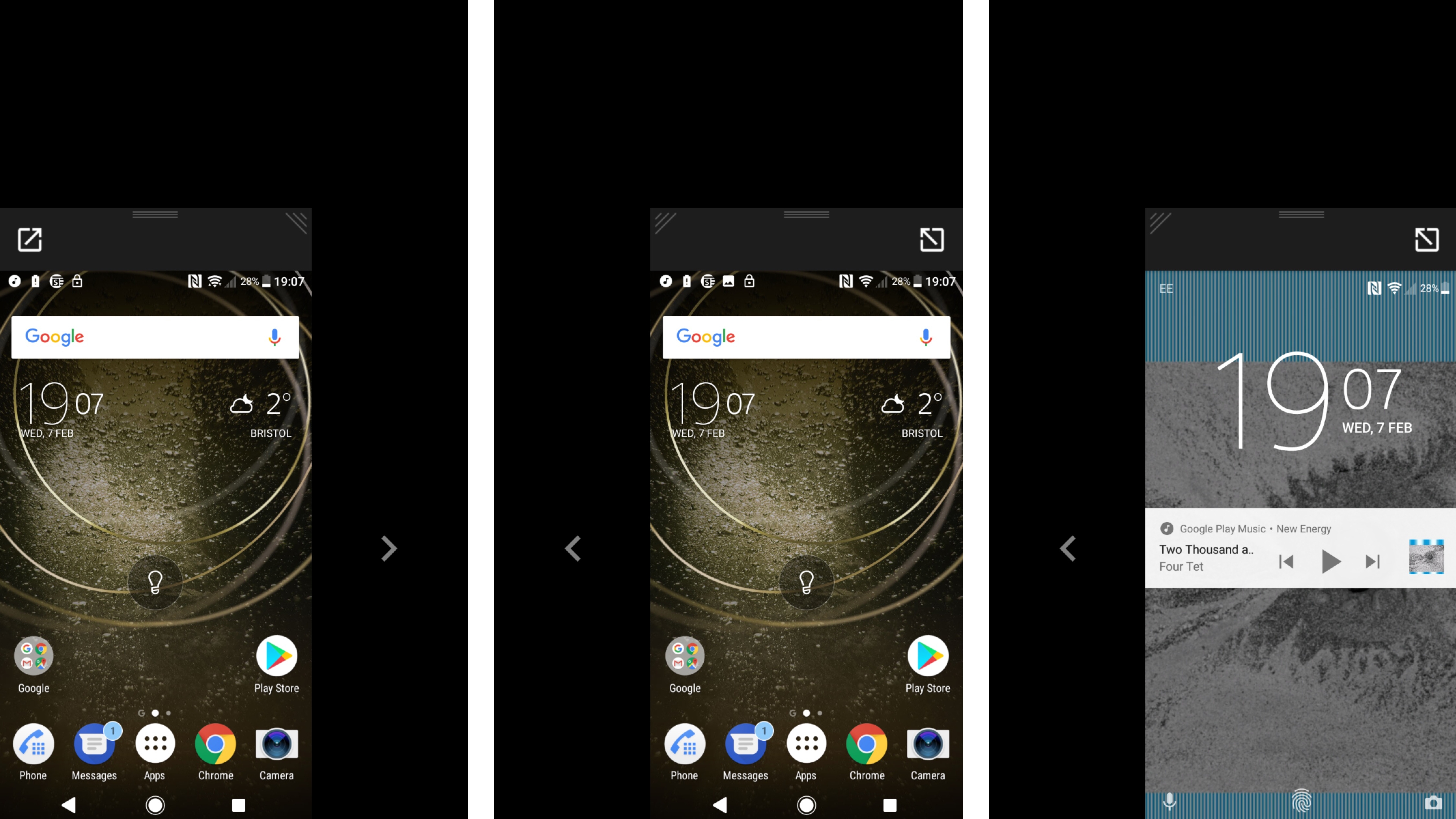
As it turns out you have to swipe left along the bottom of the screen to get the camera to boot up instead, but that’s not made immediately clear.
As always, you'll need to contend with Sony's own suite of apps. These include Sony's own Video, Music and Album apps, which is unsurprising given the size of the company’s media operations.
The simple fact, however, is that they all operate alongside Google's own Google Play Music, Google Photos and Play Movies & TV apps, which are all far better apps in most ways.
Sony also includes its own News app here, which is functional to pull together topical news stories, but it’s also far from the best effort of this kind. Flipboard does it way better.
Movies, music and gaming
- Display not sharp enough for movies or games
- Single speaker a little quiet
5.5 inches is a good size of screen for consuming visual media, but the Sony Xperia L2's meagre 720p resolution isn't ideal. It means that Full HD video content - pretty much the standard resolution for online sources like Netflix, Amazon and YouTube these days - isn't rendered at its best.
Sony can usually be relied upon to provide accurate colors, and the Xperia L2 doesn't disappoint on that front. Whether downloading a film from the Google Play store or streaming a TV episode through the Netflix app, everything looks natural - if a tiny bit washed out.
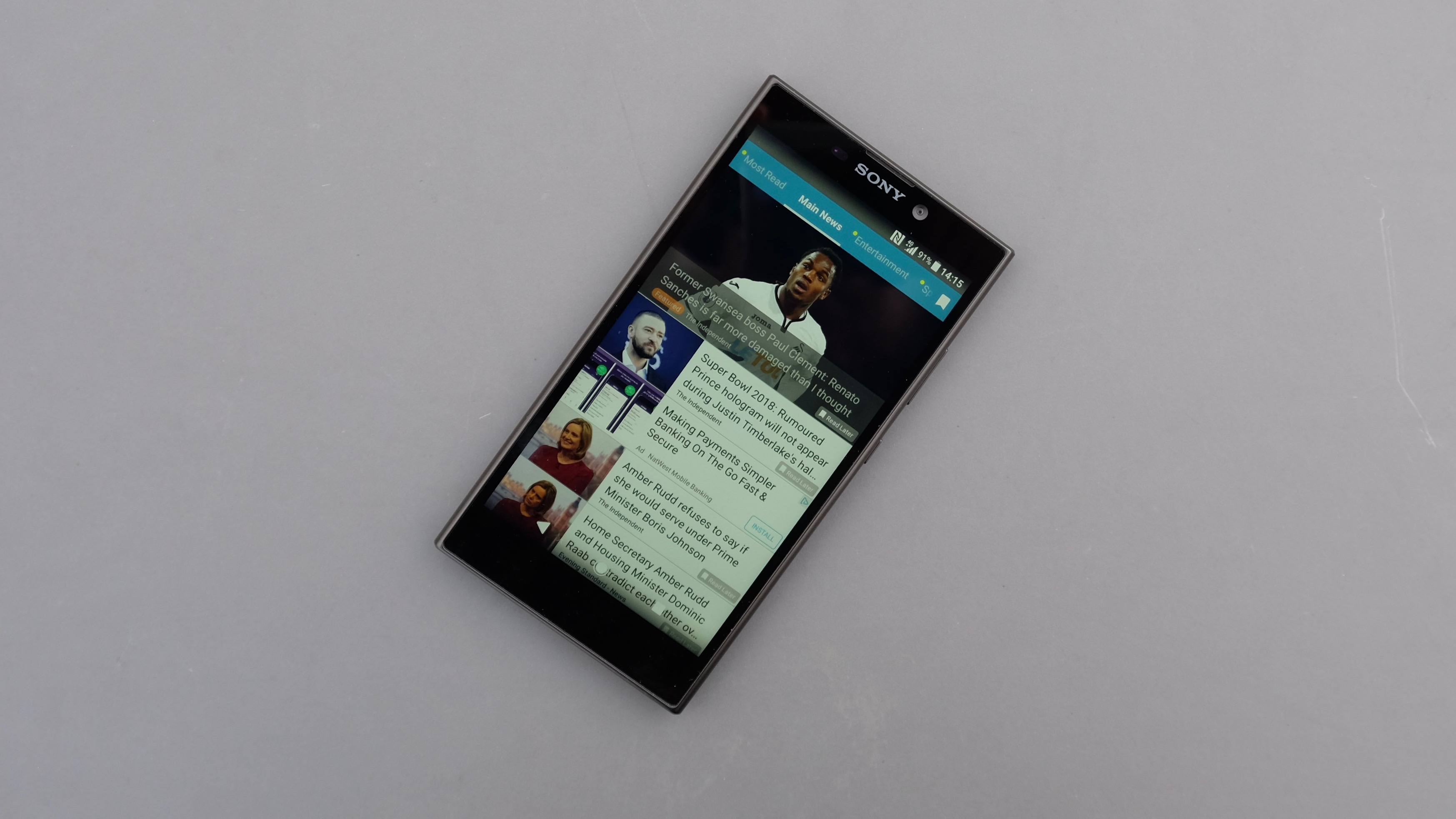
The same things can be said for games on the L2. They're presented at a good size and with decent color, but they're not rendered as sharply as they are on the Moto G5 and other 1080p rivals.
In terms of gaming performance the Xperia L2 holds its own, and that's probably at least partly down to the fact that there are fewer pixels to push around the screen. Guns of Boom ran pretty smoothly, except for some performance issues when first loading into a game.
Graphically rich racer Gear.Club ran adequately, but the graphics had clearly been scaled right down to the bare minimum for the L2's humble CPU. Also, UI and text elements visibly suffered from the downgrade in resolution.
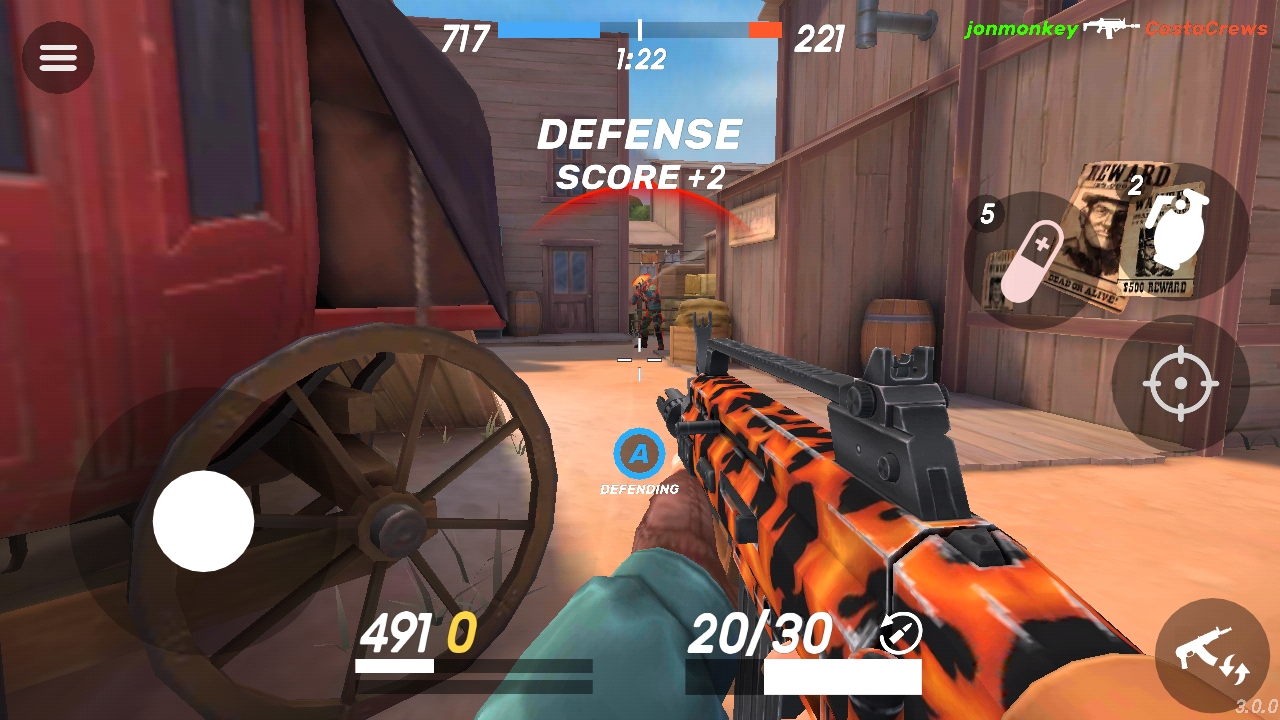
The Sony Xperia L2 fares much better with music, largely thanks to the Sony audio enhancements that we mentioned in a previous section.
The single speaker on the bottom of the phone isn't particularly great, and we found ourselves having to pump the volume right up to be able to hear video content properly, but it’s fine for short form content.
While the speaker's positioning towards one corner of the bottom edge isn't what you'd call optimal, it is far less prone to blockage with your finger than many phones worth much more money.
Also positive is the fact that you have 32GB of internal storage to play with as standard, which is a good amount for a budget phone. It's also double the amount we got with the L1, and is enhanced further by the provision of a microSD slot.
Specs and benchmark performance
- Quad-core MediaTek MT6737T isn’t up to much
- 3GB of RAM helps things along
Even at this humble end of the market, the Sony Xperia L2 finds itself a little under powered. It runs on the exact same MediaTek MT6737T quad-core chipset that powered 2017's Sony Xperia L1, and that felt rather sluggish back then.
You do at least get 3GB of RAM this time around, which is a 50% increase, and its effect on general performance and smoothness shouldn't be underestimated.
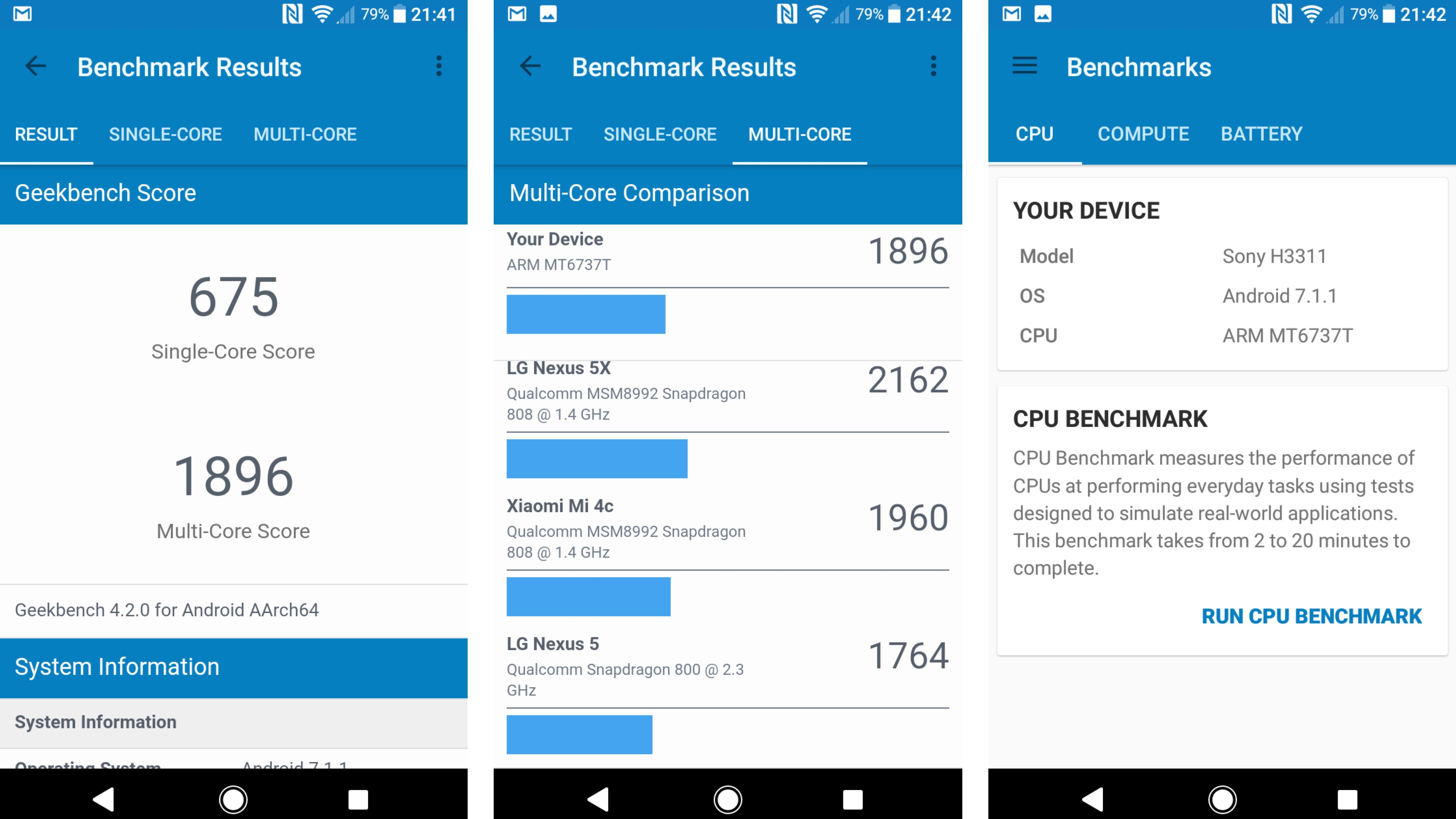
Still, the Xperia L2 comes up short of phones like the Moto G5 and Wileyfox Swift 2 Plus with their more mainstream Snapdragon 430 chips. An average Benchmark 4 multi-core score of 1,881 for the L2 falls well short of both the G5 (2,377) and the Swift 2 Plus (2,073).
You can sense this performance shortfall in general use, too. The Sony Xperia L2 is okay in general navigation, but it occasionally feels like you've caught it napping when you suddenly wake it and jump into an app or pull up a menu.
It's nothing major - just a slight pause in the UI animation or a moment of blank screen - but it all adds up to an experience that doesn't feel premium.
Current page: Anything else I should know?
Prev Page Battery life and camera Next Page Verdict and competition